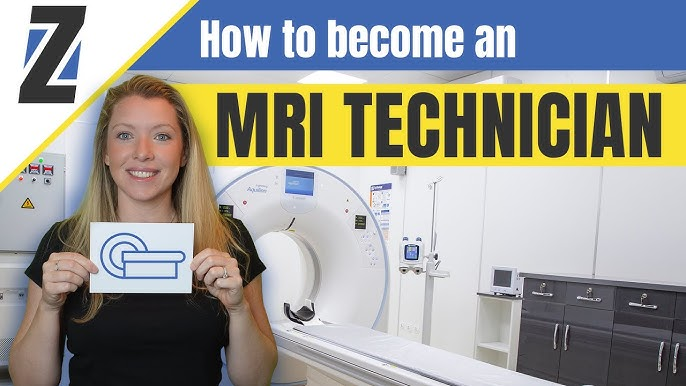Magnetic Resonance Imaging (MRI) technology plays a crucial role in modern healthcare, providing clear and detailed images of the human body’s internal structures. MRI technologists, also known as MRI techs, are specialized professionals who operate MRI machines, ensuring accurate results and patient safety. If you're interested in pursuing this rewarding career, here's a guide on how to become an MRI tech.
1. Understand the Role of an MRI Tech
Before embarking on your career path, it's important to know what the job entails. MRI techs work closely with doctors and radiologists to capture detailed images used for diagnosing and monitoring medical conditions. Responsibilities include:- Preparing patients for MRI scans
- Operating MRI equipment
- Ensuring patient safety (e.g., screening for metal implants)
- Interpreting scan results for quality
- Maintaining detailed patient records
2. Earn a High School Diploma or Equivalent
The first step is to complete your high school education. Focus on subjects like mathematics, physics, and biology, which will provide a strong foundation for understanding MRI technology and patient care.3. Pursue a Degree in Radiologic Technology or a Related Field
MRI techs are typically required to complete an associate's degree in radiologic technology, though some may pursue a bachelor's degree. Many community colleges and universities offer accredited programs in radiologic technology, which cover subjects such as:- Anatomy and physiology
- Radiation physics
- MRI procedures and safety
- Patient care techniques
4. Complete Clinical Training
During your degree program, you’ll be required to complete clinical rotations. This is a vital part of your education, giving you real-world experience in hospitals or imaging centers under the supervision of experienced professionals. You'll learn to operate MRI machines, care for patients, and handle real-life medical situations.5. Obtain Certification as a Radiologic Technologist
To become an MRI tech, you’ll need to be certified as a radiologic technologist first. Certification is typically offered through organizations like the American Registry of Radiologic Technologists (ARRT). To become certified, you must:- Graduate from an accredited radiologic technology program
- Pass the ARRT certification exam in radiography
6. Specialize in MRI Technology
Once you're certified as a radiologic technologist, you can then pursue specialization in MRI technology. This can be done through additional coursework or certification programs. Many MRI techs obtain their specialization by:- Taking a post-primary certification exam in MRI through ARRT
- Completing a certificate program specifically in MRI technology
7. Obtain Licensure (if required)
Many states require MRI technologists to be licensed, in addition to being certified. Licensing requirements vary by state, so it's important to check your local regulations. Generally, you will need to:- Provide proof of certification
- Pass a state-specific exam (in some cases)
- Maintain continuing education to renew your license
8. Gain Work Experience
Once certified and licensed, you'll be qualified to work as an MRI technologist in hospitals, outpatient clinics, diagnostic imaging centers, and other healthcare settings. Early in your career, you’ll gain valuable experience by working under more experienced techs, honing your skills in imaging, patient communication, and equipment operation.9. Pursue Continuing Education
Continuing education is essential for MRI techs to maintain their certification and licensure. ARRT requires you to complete continuing education credits every 2 years. This ensures that you stay updated with the latest advances in MRI technology and patient care. Some techs also choose to pursue advanced certifications or specialize further in areas like:- Cardiac MRI
- Pediatric imaging
- Neuroimaging
10. Consider Advancement Opportunities
With experience and additional training, MRI techs can pursue leadership roles, such as becoming an imaging center manager or radiology department supervisor. Some also move into teaching or research roles within the field of medical imaging.Conclusion
Becoming an MRI technologist requires a mix of formal education, hands-on clinical training, and certification. It’s a rewarding career that offers growth opportunities, excellent job stability, and the chance to make a significant impact on patient care. By following these steps, you’ll be well on your way to a successful career in MRI technology.Read more:
1= https://dapachecker.co.uk/how-to-access-dual-enrollment-materials-at-georgia-tech/
2= https://dapachecker.co.uk/how-to-use-orion-motor-tech-ac-gauges-a-step-by-step-guide/
4= https://dapachecker.co.uk/how-to-check-the-reference-number-for-comcast-advanced-tech/
5= https://dapachecker.co.uk/how-to-access-georgia-tech-dual-enrollment-class-material-online/
6= https://dapachecker.co.uk/how-much-is-it-to-get-into-georgia-tech/
7= https://dapachecker.co.uk/how-to-become-an-mri-tech-a-step-by-step-guide/
8= https://dapachecker.co.uk/how-long-does-it-take-to-become-a-surgical-tech/
